My First Marathon

- Name
- Francisco Sandi
- Published on
Running my first Marathon has been one of the most physically and mentally challenging experiences of my life. It wasn’t just about running 42.2 kilometers, but about the more than 800 kilometers I ran during training, the early mornings, the moments of doubt, and the quiet satisfaction of seeing all the work come together on race day. In this article, I’ll share how I prepared for my first marathon, how race day unfolded, and some of the lessons I learned along the way.
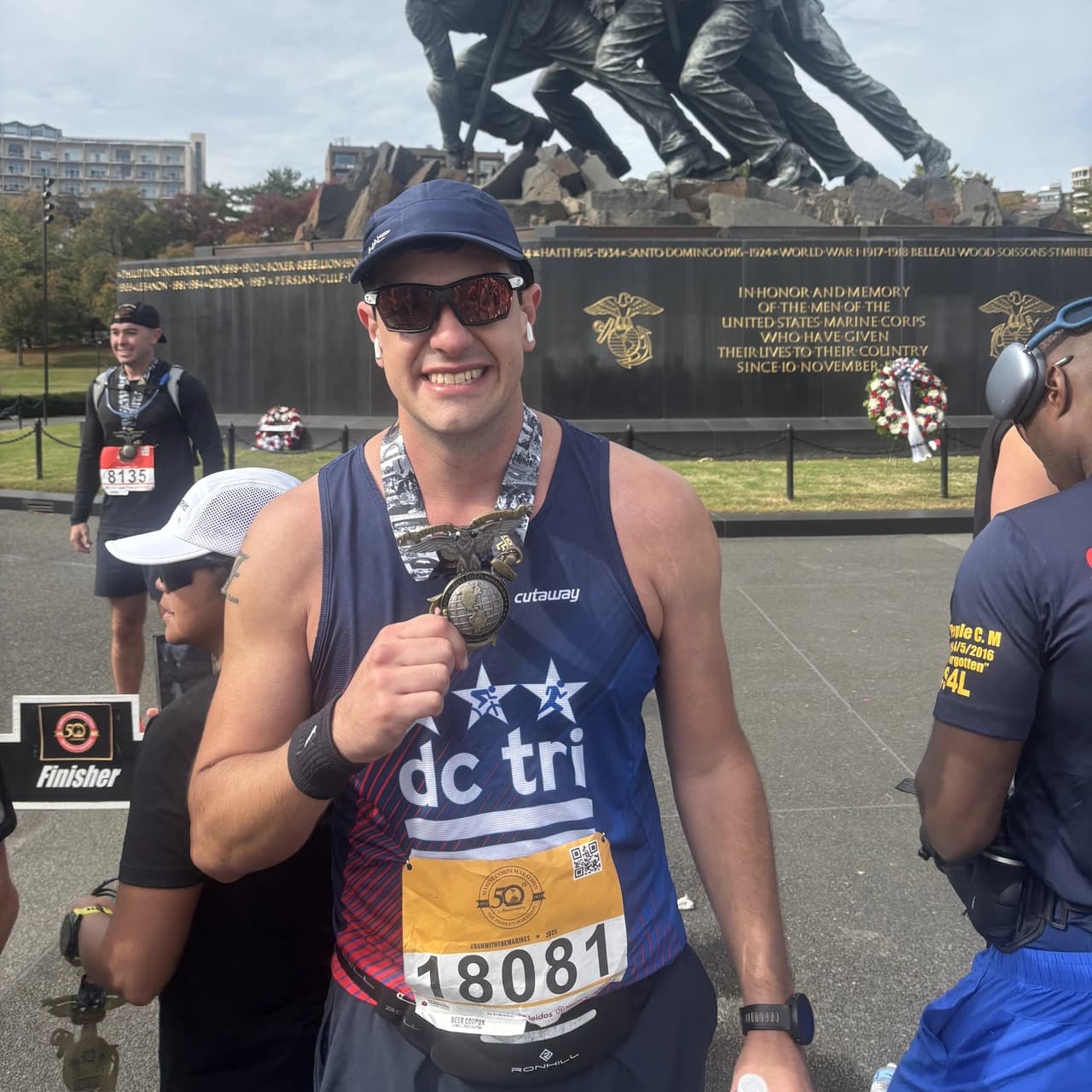
The Challenge
After completing my first two Olympic Triathlons last year, I was ready for a new challenge, one that would test endurance and focus in a different way. I was curious what it would feel like to focus entirely on one discipline.
The Full Marathon
The Marathon has an aura of mystery. Something about the fact that there's so many people running those specific 42.195 km every year in many cities around the world, something about its history from Greece to the Olympics, and of course something about the mystique of the mental and physical strength it demands and the stories of people overcoming incredible odds to finish it or running for causes that are deeply meaningful to them.
Since I moved to Washington, D.C. I had quietly built a small running story, having run the DC Half Marathon in 2024 and 2025, the Rock 'n' Roll Half Marathon in 2024, and the Cherry Blossom 10-Mile Run in 2025. Those experiences left the concept of a Full Marathon sitting in the back of my mind like an unfinished sentence, very likely also driven by the fact that the Half Marathons have the word "Half" in it. That quiet idea eventually turned into a goal, and 2025 would be the year to go for it.
Choosing the Race
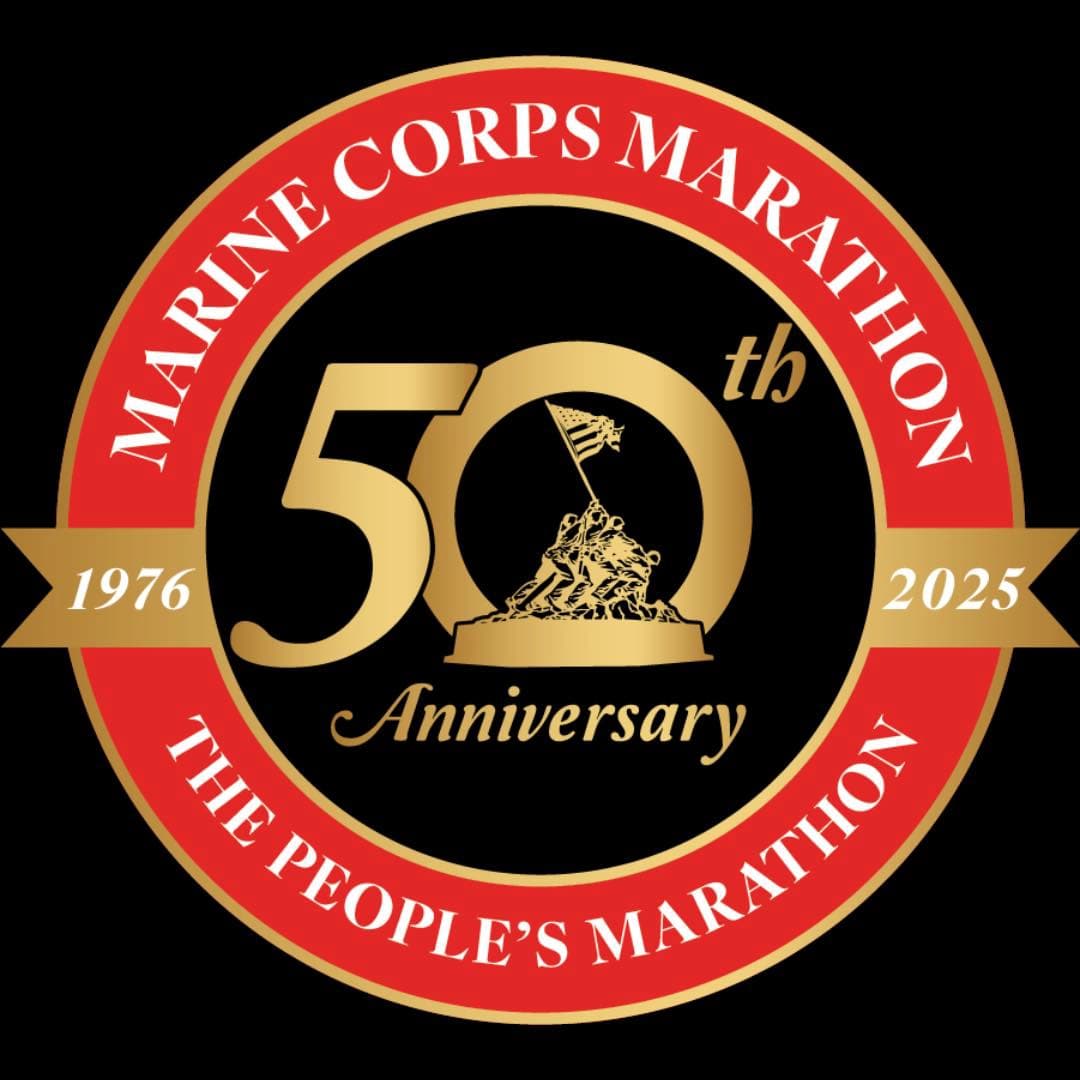
MCM 50th Anniversary Logo
The Marine Corps Marathon (MCM) in Washington, D.C. immediately caught my attention. Not only for its location, but also because it is one of the most iconic races in the U.S., especially known to be a great race for first-time marathoners. This year marked its 50th anniversary, making it an especially meaningful event to join. Known as “The People’s Marathon,” MCM is famous for its scenic route through the capital, its incredible crowd support, and the Marines lining the course from start to finish. Running it felt like the perfect event to try this challenge.
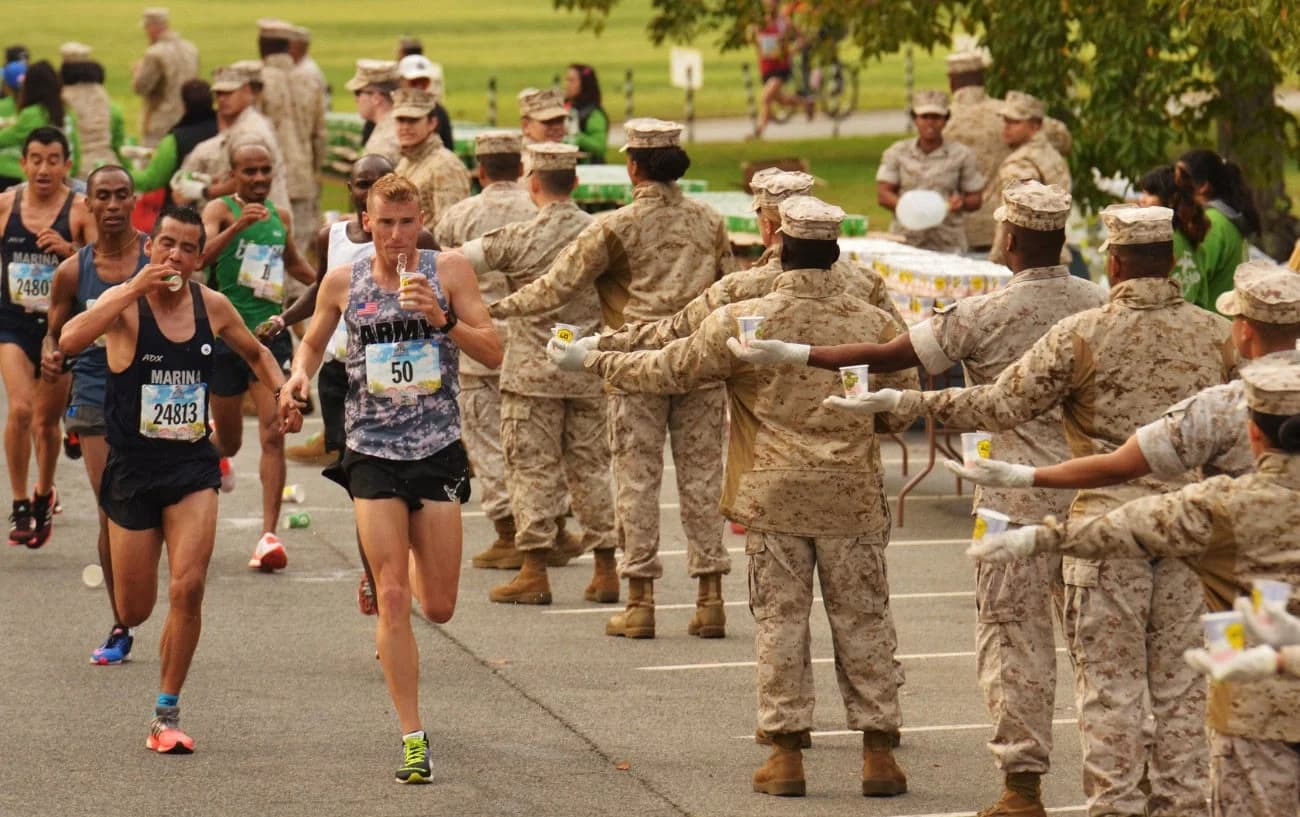
Marine Corps Marathon (Hydration Station)
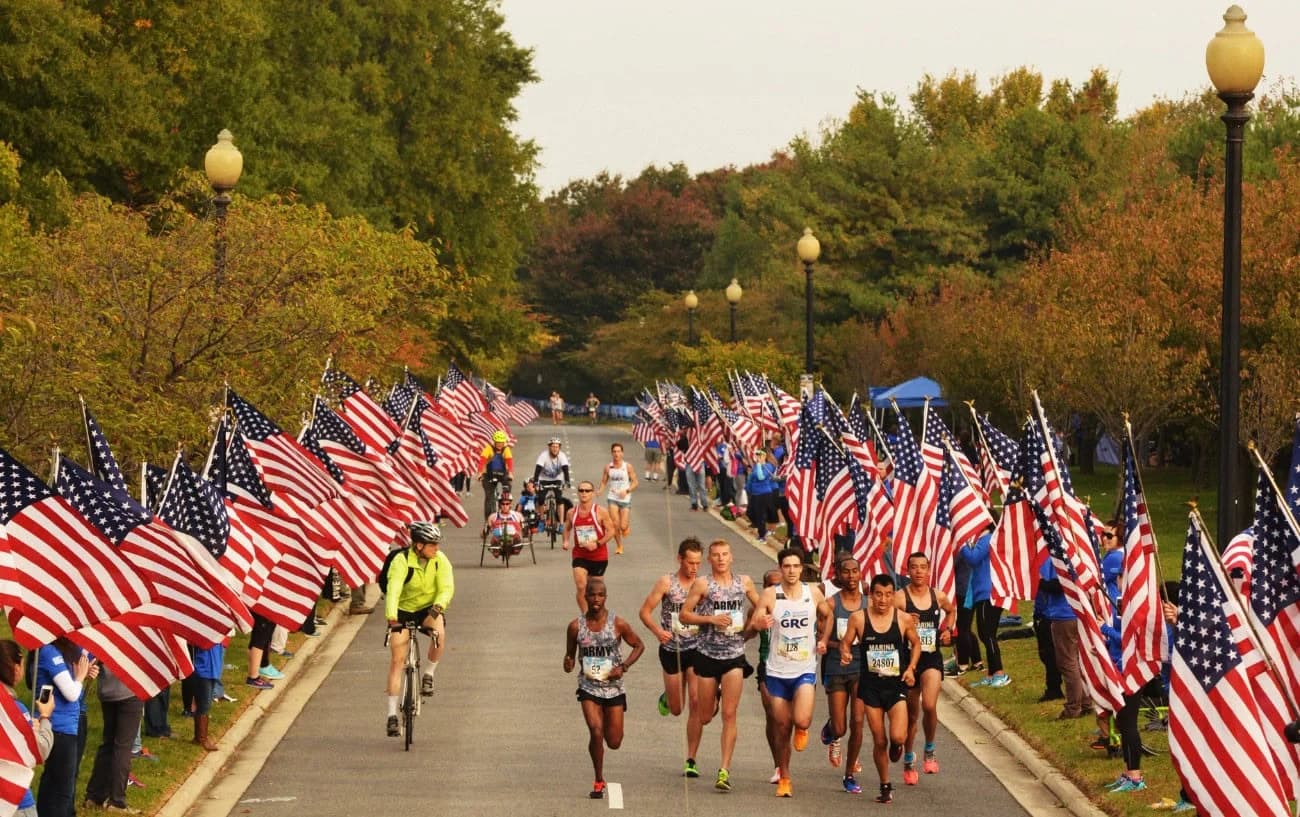
Marine Corps Marathon (The Blue Mile)
So, after a quick investigation into Marathon preparation, and ensuring that it was a realistic goal with enough time to train for it, I signed up early in the year. Then, I started telling my friends and family about it, which in the past has proved to help me stay accountable, and just like that I was ready to commit to the months of training ahead. I have found that setting these type of goals is a good way to challenge myself, get out of my comfort zone, keep me motivated for a long time, and pushed me towards healthy habits in general.
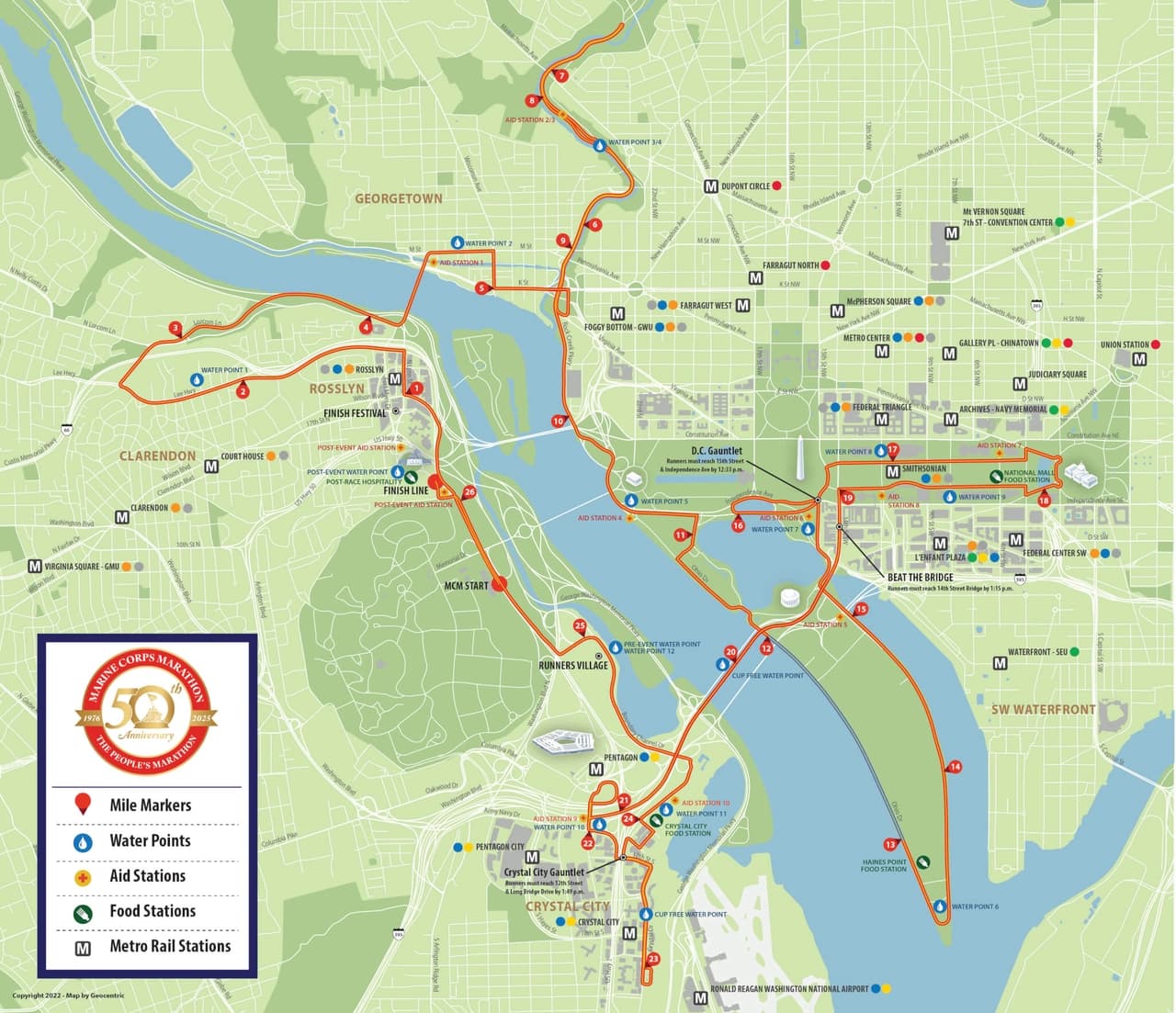
Marine Corps Marathon Route Map
The Preparation
The Plan
For my preparation I used the well-known Hal Higdon Marathon Training: Novice 1 program, a 18‑week plan designed for first‑time marathoners with a solid running base. I picked it because of its simplicity, focus on building endurance, and emphasis on easy pacing.
It has a weekly structure that consists of 3 easier runs (Tuesday, Wednesday, and Thursday), 1 long run (Sunday), 2 rest days (Monday and Friday), and 1 optional cross‑training or easy recovery day (Saturday).
There is no formal speedwork for being a simple plan for beginners, just steadily progressing the mileage with step‑back weeks that ease volume before building again. Long runs climb from 10 km up to a single 32.2 km run about three weeks before the race (on the iconic week 15), then the plan tapers to reach the race day in an optimal state. The simplicity removed decision fatigue, I just had to show up and execute, which was just what I needed for this first experience.
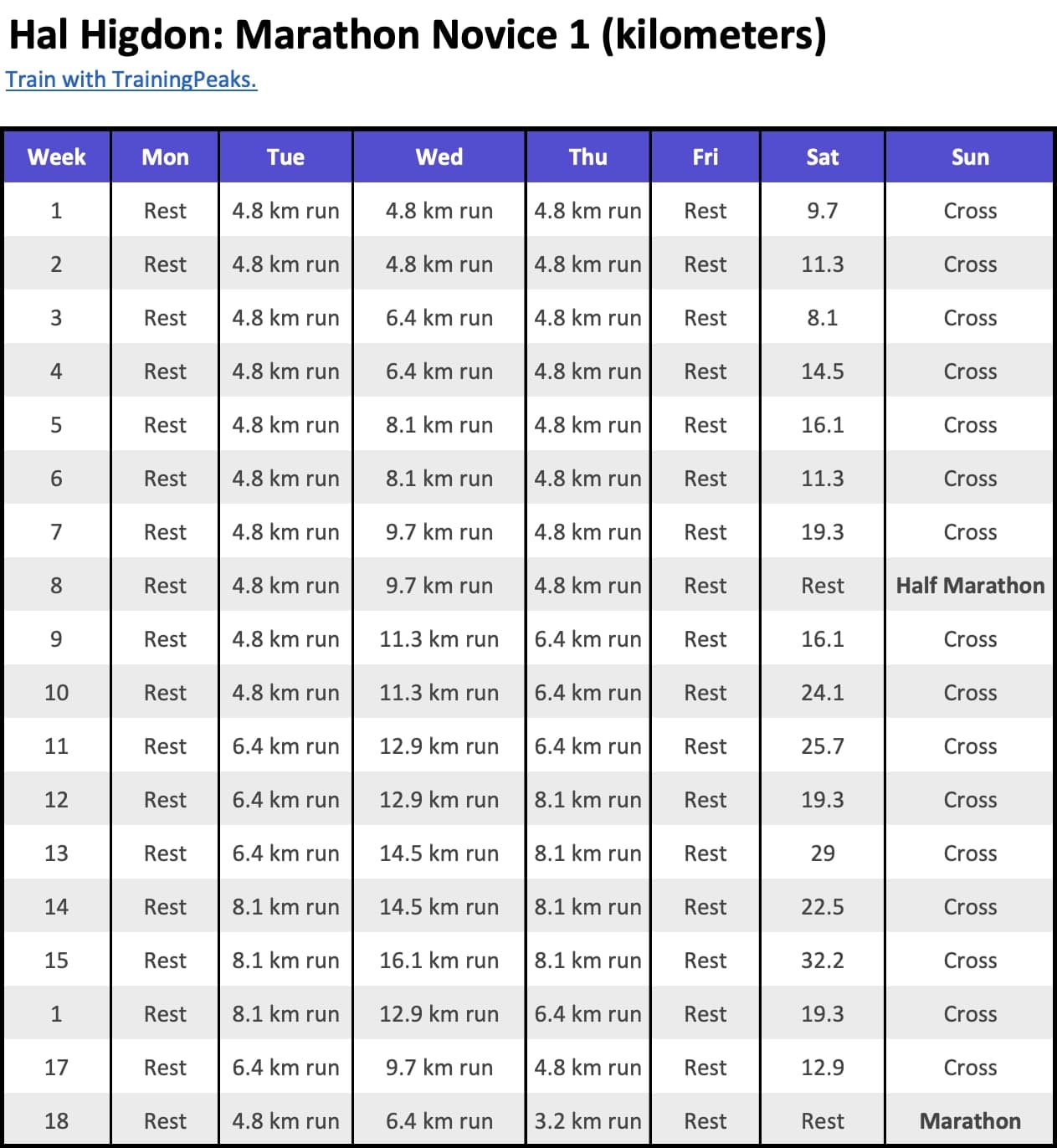
Hal Higdon Novice 1 Marathon Training Plan (in km)
A note on this program, it is designed for runners who already have a base level of fitness, so I made sure I was comfortable running at least 20-25 km per week before starting the plan. If you are not there yet, it might be better to start with a more gradual build-up or a beginner's program.
Having the triathlon background helped with aerobic conditioning, but I had to unlearn forcing intensity. Without swimming and biking sharing the load, my legs needed more respect after long runs. I learned to adjust, listen to small signals, and treat sleep, fueling, strength, and mobility as non‑negotiable parts of training.
The Ultimate Training Guide
Hal Higdon’s book, Marathon: The Ultimate Training Guide, was a big help alongside the schedule. It gave context for why the plan is structured the way it is, especially on topics like not rushing long-run pace, managing the taper, fueling, and the mental checkpoints late in the race. Reading the reasoning behind each phase made it easier to trust the process instead of second‑guessing or adding unnecessary workouts. It was also a good source to read the experience of many runners, which helped me feel more connected to the running community and understand the challenges I could face along the way were part of the journey.
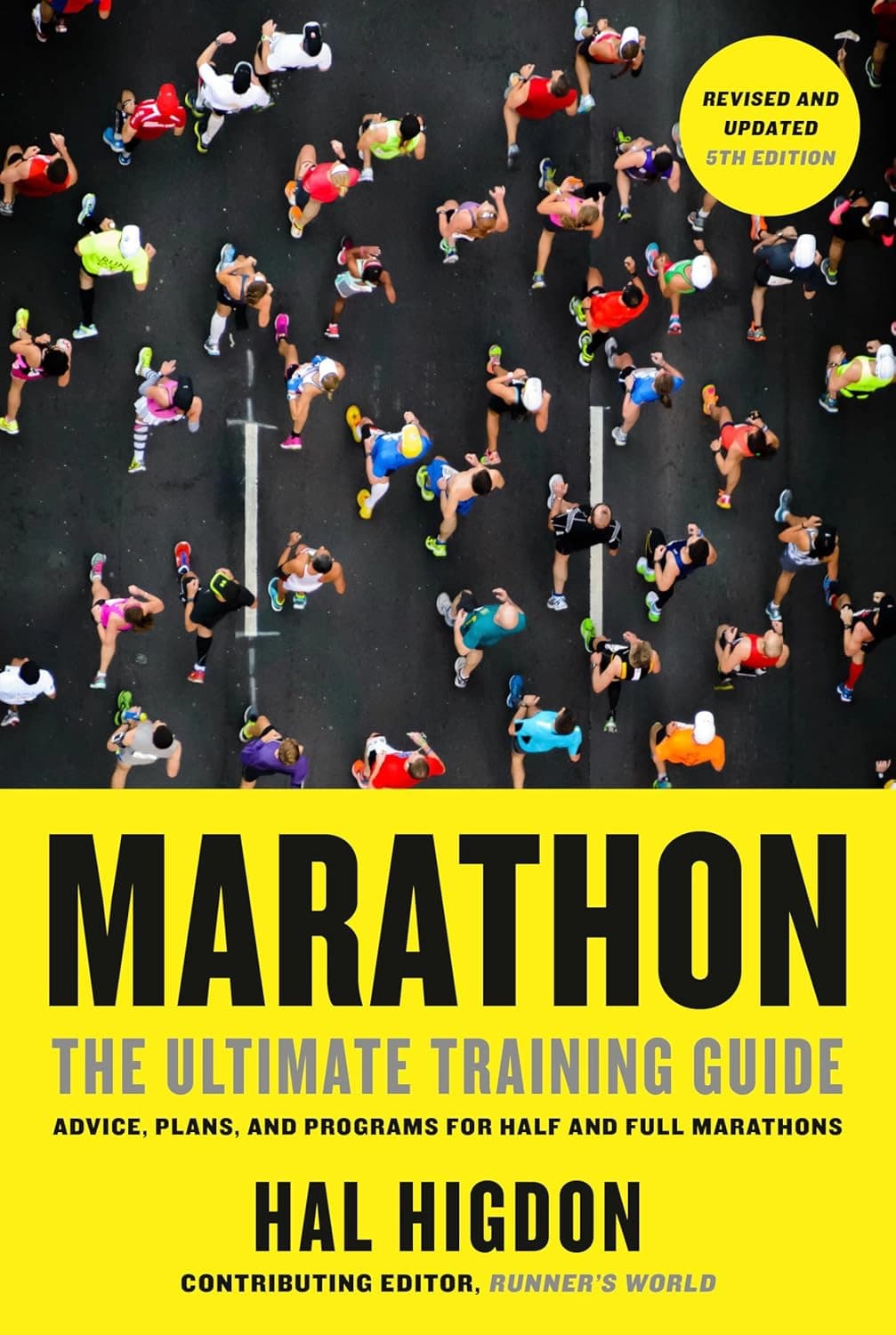
Marathon: The Ultimate Training Guide, 5th Edition
Takeaways from Training
These are some of the key lessons I learned during the months of training.
Pacing
Something that stood out was how much slower I had to run than I expected. I had already heard that "to go further you have to slow down", but experiencing it firsthand was a different story. Paying more attention to effort and heart rate rather than pace helped me stay in the right zones, especially on long runs. It was humbling but necessary to build the endurance needed to increase mileage without burning out or risking injury.
Moving Forward
The long runs taught me humility, I especially remember the 28 km one that left me questioning whether I’d ever be ready for the 42.2 km. Sometimes I felt like I was moving backward or that I was not improving, but I realized it is all part of the process and that every run, even the tough ones, were making me stronger. So I had to learn not to be too hard on myself, let go of the negative thoughts, learn my lessons and move forward, trying to do it better the next time.
Consistency
Training for a marathon is as much a mental game as a physical one. There were mornings when I woke up and felt like I could conquer the world, and others when just getting up and putting on my running shoes felt like a victory (especially when the weather was less than ideal or I had a poor night's sleep). This is not directly related to running, but very often on those tough days I would remember an interview where Cristiano Ronaldo said that on days when he didn’t feel like training, but he still did it anyway, those were the days that made the difference. I tried to keep that mindset with me during this process and show up even when motivation was low.

Some pictures from my training runs around Washington, D.C., 2025
The Race
Race Week
The final week before the marathon, besides getting mentally ready, tapering, and increasing hydration and carbs consumption, I also started planning my game plan, logistics, nutrition, and pacing strategy.
To help me analyze my training data, I built a small script to get a better sense of my game plan, what pace I could realistically hold (using the Riegel formula), and what finish time to expect. It also gave me a reason to sit down, look back at my training, and analyze how far I had come, by exporting the data from my Garmin watch and playing around with it. In case you’re curious on how this formula works, or want to try it out for yourself, the project is called Runalytics and the code can be found here.
Besides having a plan, it was really important to trust the training and avoid overthinking things. I reminded myself that I had done the work, and that now it was just about executing on race day.
Race Day
Race day started early. I arrived before the start at 7:20 a.m., surrounded by more than 30.000 runners who had also shown up for the Marine Corps Marathon’s 50th anniversary. It took a while for the crowd to move and for me to actually cross the starting line, but the weather was on our side. It was cold, but not freezing, and there was no rain or strong sun. Just a calm, steady morning. I had been worried about my heart rate spiking early or feeling tired too soon, since those things had happened during training, but fortunately none of that showed up today. I felt clear, calm, and focused from the start.
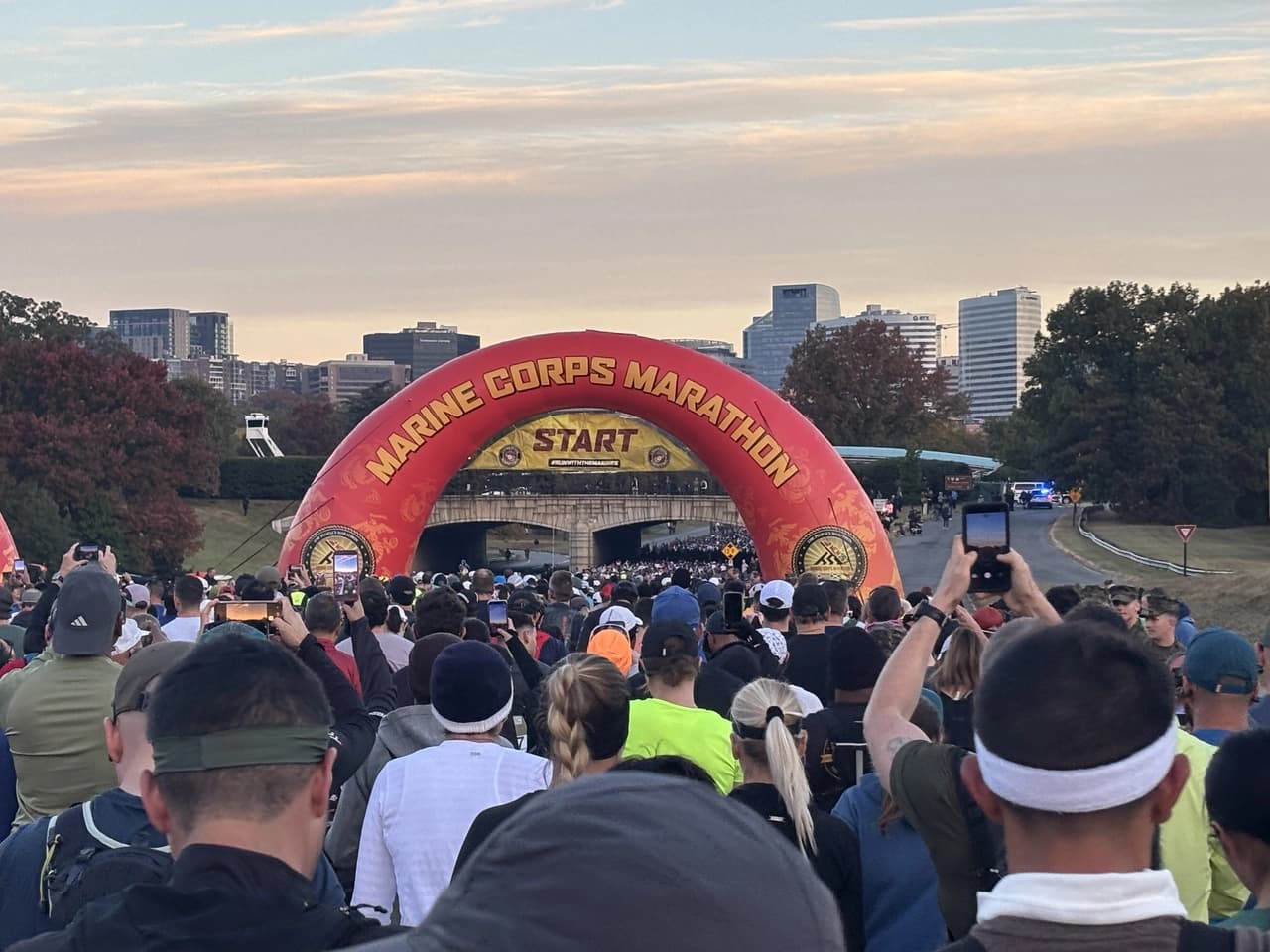
Starting line of the Marine Corps Marathon 2025
From the first mile, I decided to stick with the 4:35 pacer group and that ended up being one of the best decisions of the whole race. I stayed with that group for hours, almost glued to the pacer's shoulder. Usually I struggle with keeping a steady pace since I get influenced by other runners and either go too fast or too slow. But following the pacer kept me grounded. It gave me a reference point I didn't have to think about. For most of the race, it felt like I was just flowing forward, one step after the other, carried by the rhythm of the group.
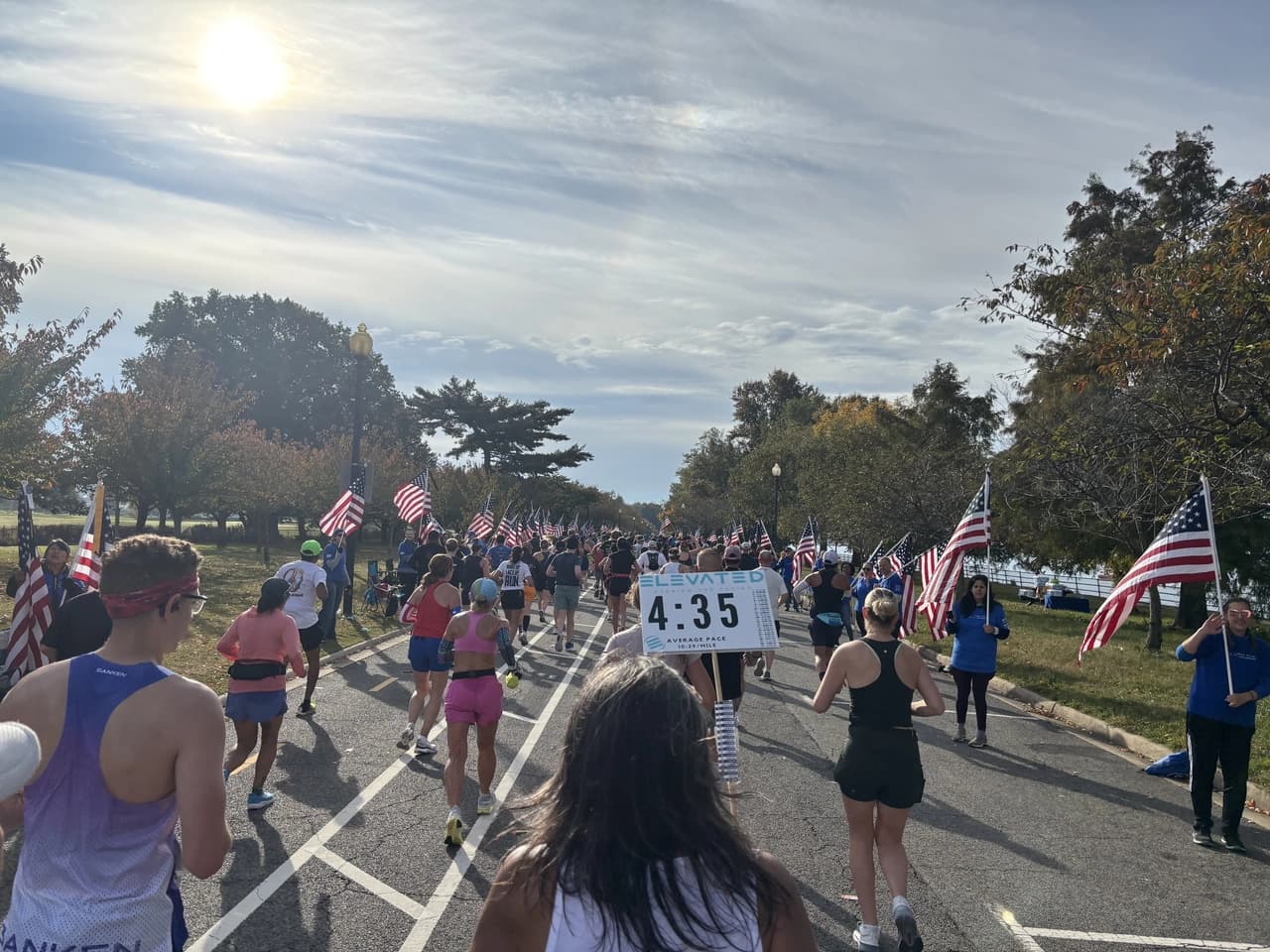
The 4:35 pacer group at the blue mile
Around mile 20, I started to really feel the weight in my legs, especially in my quads and knees. But I could still run, and that in itself felt amazing. It wasn’t until mile 22 that I walked for the first time. At that point, I shifted into a run-walk strategy: run for about five minutes, walk for fifteen or twenty seconds, then pick the pace back up. I timed the walking with water stations to drink, lower my heart rate, and reset. It worked better than I expected. My wife and friends were out on the course, and seeing them in those final miles meant everything. Their cheers really helped me push through the fatigue and stay present in the moment.

The best support crew: My family and friends
I finished strong. In those last moments, I still had enough left to pass people and cross the finish line with energy and pride. The time was within my expected range (4:38), but what mattered most was the feeling. I could tell that the training, especially the three weeks of tapering, had done its job. The sleep, the nutrition, the discipline, all of it came together exactly when it needed to. This first full marathon was a very positive experience for me, one that I’ll carry for a long time. Today, I really felt why people say that race day brings everything together.

Post-race picture after crossing the finish line
The event was incredibly well organized, from start to finish. The course was scenic, taking us through iconic landmarks in Washington, D.C., and the support from the crowd and Marines along the way was uplifting. The energy was contagious, and it felt like the whole city was cheering us on.
Reflections and Advice
Running a marathon isn’t just about covering the distance, it’s about who you become along the way. The discipline, the structure, and the small victories during training are what make race day possible, it's proving yourself that you are capable of more than you think. Looking back, here are a few lessons and pieces of advice I’d share with anyone thinking about taking on a similar challenge for the first time:
- Respect the process. Progress takes time. Each run builds a foundation for the next, so be patient and trust the process.
- Run slow to run strong. Easy runs are where endurance is built, don’t rush them and try to control your heart rate to stay within Zone 2 and sometimes Zone 3. I highly recommend using a heart rate monitor, I used my Garmin Forerunner 256 watch for that, which worked well.
- Nutrition. Practice your nutrition, fueling, and hydration plan. The training period is the best to experiment, find what works for you, and make sure to make mistakes this early so you don't have them on race day.
- Listen to your body. This is an advice that my wife, who is a way more experienced runner than I am, always remind me about. Rest is part of training, and recovery is important. Don’t ignore small warning signs.
- Enjoy the journey. The miles before the marathon is where you will spend most of your time, so find joy in the process, celebrate small wins, and appreciate the opportunity to challenge yourself.
Running a marathon isn’t about crossing a line, it’s about every single step you take to get there, one at a time.
If you’ve ever thought about running a marathon, I encourage you to go for it. You don’t have to be fast, and it doesn’t matter what your finishing time is. What matters is showing up, trusting the work, and proving to yourself that you can go farther than you once believed.
That being said if you have never run before, I would recommend starting with a shorter distance first, like a 5K or 10K, and build it from there, taking one step at a time.
Previous Article
Learning to play Blackjack with RL